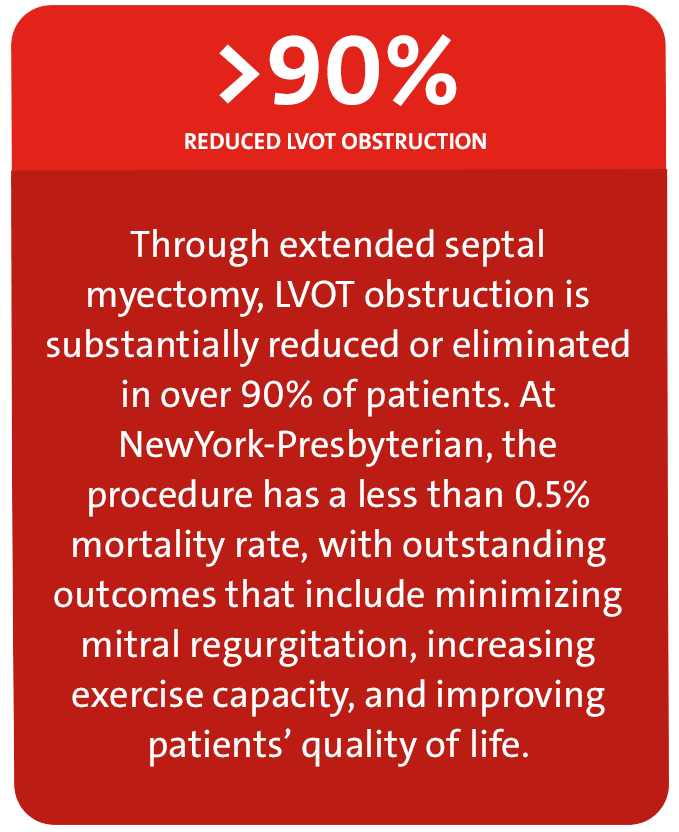Hypertrophic Cardiomyopathy
The complexity of hypertrophic cardiomyopathy (HCM) requires a multidisciplinary team that calls on the skills of cardiologists, cardiovascular imaging specialists, surgeons, electrophysiologists, and geneticists to offer patients essentially every treatment choice, including medication management, alcohol septal ablation via cardiac catheterization, and surgical options.

Extended Septal Myectomy
NewYork-Presbyterian cardiac surgeons are among the country’s leading experts in extended septal myectomy, a procedure in which a deeper, more extensive portion of the thickened ventricular wall is removed to relieve obstruction of the left ventricular outflow tract (LVOT). Prior to surgery, the team conducts a unique preoperative imaging plan. This includes a cardiac CT scan to create a 3-D model of the surgical anatomy and generate a virtual surgical myectomy. The detailed preoperative planning as to where to resect is enormously helpful for informed decision making as entering via the aortic valve is particularly challenging due to the extremely limited view of the enlarged tissue. Our surgeons have found that the extended septal myectomy approach produces longer lasting, more effective outcomes than standard myectomy.
Total Endoscopic Robotic Surgery
Left ventricular outflow tract obstruction due to systolic anterior motion of the mitral valve is a frequent cause of disabling symptoms in HCM. Our cardiothoracic surgeons are among a select few in the country performing endoscopic robotic surgery for the treatment of HCM. In the traditional approach, the surgeon enters through a sternotomy and resects the muscle bundle through the aortic valve. With the robotic technique, the surgeon can perform a septal myectomy and repair the mitral valve at the same time. This approach permits excellent visualization of the thickened septum from the aortic valve to the apex and allows precise interventions on the mitral valve as it relates to the left ventricular outflow tract, the area that is narrowed in hypertrophic obstructive cardiomyopathy or hypertrophic cardiomyopathy. Patients with prior surgery via a sternotomy can be ideal candidates for the robotic approach as it avoids most or all of the scar tissue created by the previous operation.



